Facebook’s fake numbers problem — Lex in depth
Roula Khalaf, Editor of the FT, selects her favourite stories in this weekly newsletter.
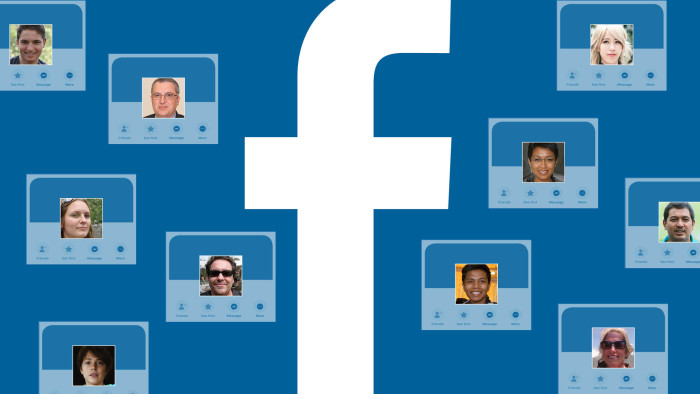
At first glance, Amy Dowd’s Facebook account appears perfectly normal. There is a smiling profile picture of a young woman surrounded by autumnal leaves and the date that she began a new job at Southeast Missouri State University. But look more closely and things begin to seem strange. Unlike most 29 year olds, Amy has no friends, no interests and no photos. The only thing she has written is a gushing review of a US haulage company. “Fake account,” replied one user. They were right.
This Amy Dowd does not exist. Her account is a fake bought by the Financial Times as part of an investigation into the millions of bogus accounts littering the social media network i n spite of efforts to better verify users.
The proliferation of phoney identities has reached a record high. That is a problem for a company that trumpets user growth — considered a barometer of health by investors — while receiving criticism for failing to prevent the spread of false information by third parties.
Facebook’s own estimates suggest duplicate accounts represent approximately 11 per cent of monthly active users while fake versions make up another 5 per cent. Others claim the total is higher. Yet Facebook continues to promote its user base as an incredible 2.45bn per month — close to one-third of the global population.
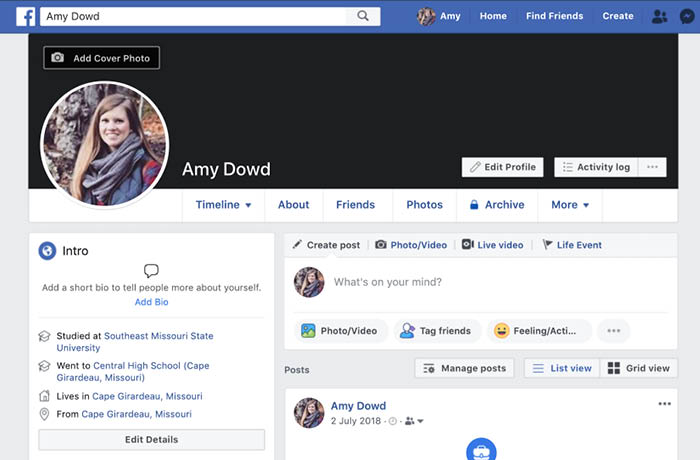
Growth in user numbers looks significantly less impressive once adjusted for duplicate and fake accounts — up 7 per cent in the past two years, rather than 18 per cent calculated by Facebook.
The discrepancy highlights the lack of transparency around the metrics used by one of the world’s most valuable companies. Given the importance of users to the company’s revenue growth and profitability Facebook needs to open up its data to more detailed audit and create a new, adjusted metric to count users.
Mark Zuckerberg has always said the company he founded is a platform for authenticity. Unlike anonymous chat rooms, Facebook encourages real names and photos. Facebook-owned messaging service WhatsApp and photo-sharing platform Instagram are promoted in the same way. Last year, the chief executive told Congress users were “not allowed” to have fake accounts.
Yet creating an account simply requires a name and email address — no other verification is required. Third-party online-vendors, such as pvacart.com and residentialpva.com, exploit this open-door policy, competing to offer unique, handcrafted, phone-verified profiles to buyers via a PayPal or bitcoin payment. “Very trusted by Facebook, very resistant to being banned,” one of the companies claims.
The process is easy. It costs just $25 to buy 50 fake accounts. More if they are fleshed out with profile pictures, interests like sports teams, even reviews of long-distance moving companies. After an online payment is made the accounts arrive by email the next day in a spreadsheet of usernames and passwords. Facebook security checks were triggered for newly created accounts bought by the FT when details were added. But accounts created years ago — like Amy Dowd’s — did not arouse suspicion until some were accessed in multiple countries at the same time. It was blocked on Friday.
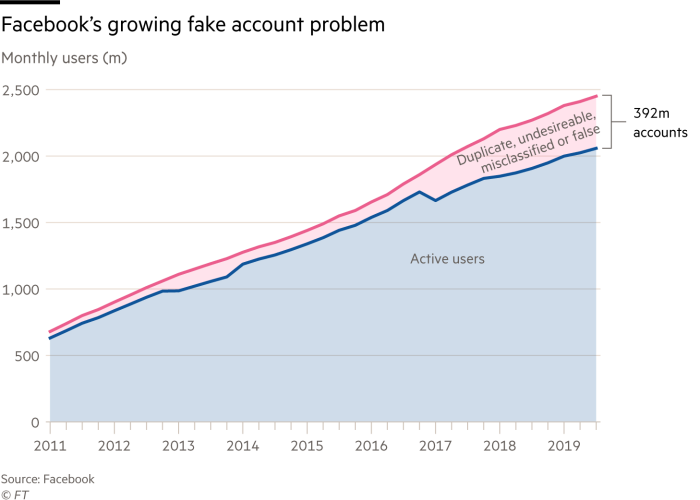
What happens next is up to the buyer. Fake accounts can be used to boost follower numbers, which is useful for online influencers who are paid for plugging products or services. Purchasers may use bogus identities to spread disinformation or unsolicited commercial messages, content or requests.
Facebook is aware of the issue. The Federal Trade Commission has declared that selling fake followers is illegal. But last week the company declared it had shut down an extraordinary 5.4bn fake accounts in the first nine months of this year alone — more than double the number of actual users.
In March, Facebook announced that it was suing four Chinese companies for selling fake Facebook and Instagram accounts, citing illegal use of the company’s trademarks. The defendants have since taken down the sites.
“It is adversarial,” says Alex Schultz, Facebook’s vice-president of growth. “As we lock down one area, spammers come in and they will attack another area. And so we take on the new attacks.”
Fake account detection is complicated by the fact that not everyone uses Facebook in the same way.
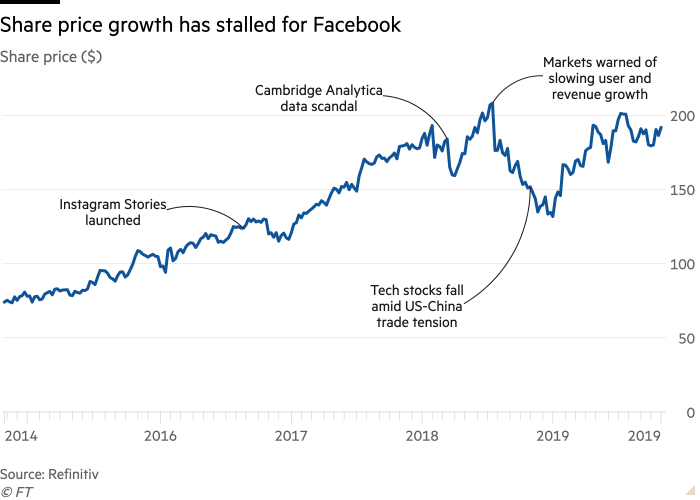
“There is a massive range of behaviours,” says Mr Schultz. “Think about a new user to the internet who has never touched an app or website. They will behave very differently to a super-connected teen in the west or somewhere like Japan or South Korea.”
In 2017, Facebook adjusted its calculation and raised its estimates of fake accounts but it also admits the problem itself has grown as it expands in emerging markets. When the company filed its S-1 document with the Securities and Exchange Commission, ahead of an initial public offering in May 2012, estimates for fake or duplicate users were not included. By the end of that year, Facebook calculated that 5 per cent of accounts may have been duplicates, 1.3 per cent “misclassified” and 0.9 per cent “undesirable”.
Fake users have become more difficult to identify as the company has grown. When it launched in early 2004 Facebook offered an appealing veneer of exclusivity. Membership was limited to Harvard students and then extended to a handful of Ivy League universities. By 2006, this approach had been abandoned in pursuit of global domination. Membership numbers exploded. In 2008, the social network had 100m users. By 2012, it had 1bn.
Facebook’s user growth and rising revenue have supported its share price in the midst of scandals and a worldwide #deletefacebook campaign. Expectation of future growth is why Facebook trades at 21 times its expected earnings.
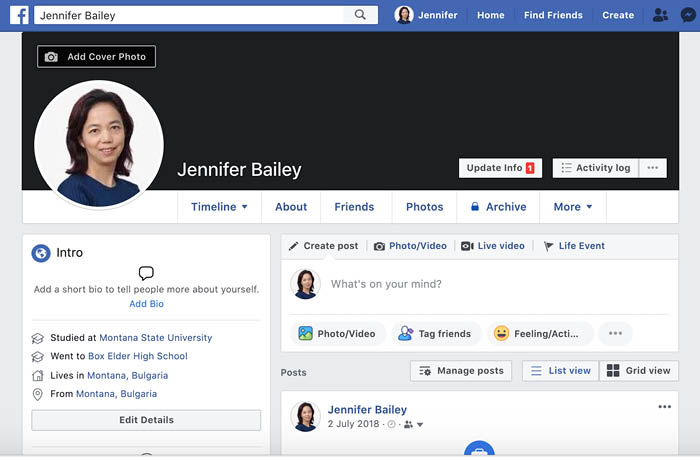
The wealth of information users provide — where they live, what they like and what they buy — gives Facebook a vast data set from which to sell tailored adverts. Along with Google it has created a digital advertising duopoly. Last year, revenues came close to $56bn. This year it is expected to make over $70bn.
Users and advertisers complain that Facebook does not offer the same sort of insights about itself. In most industries — from financial services to oil and gas — independent auditors ensure that the assets the company holds are accounted for. But technology companies whose business models are built on gathering user data consider themselves an exception, citing privacy concerns and the technical difficulty of allowing others to look under the hood.
The way Facebook identifies fake and duplicate account numbers, for example, is not explained in detail. There may be overlap. All the company will say is that it involves an internal review of a limited sample of accounts and “significant judgment”.
Brand owners and advertising agencies have long demanded Facebook open its platform to allow for fully independent third-party verification of other metrics, accusing the company of “marking its own homework”. Dina Srinivasan, former advertising executive and author of The Antitrust Case Against Facebook, describes this as “familiar behaviour of monopolists” in advertising markets that do not want others to know the data they possess.
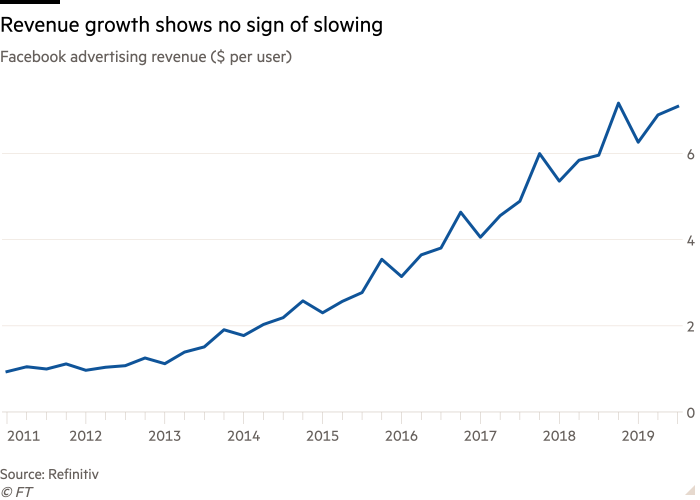
Many advertisers want more meaningful data on areas such as audience reach and the content that runs alongside ads. “It’s fair to say [progress has been]slower than people would like it to be,” says Wendy Clark, chief executive of Omnicom Group’s DDB Worldwide advertising agency.
Demands have become more pressing since Facebook admitted in 2016 that it had miscalculated the average viewing times of some video adverts. Marketers argued that average view times were inflated by as much as 900 per cent in a lawsuit that was settled for $40m.
Since then Facebook has made a concerted effort to lift the lid on certain statistics. Last year, it received accreditation from the US Media Ratings Council for its advertising impressions numbers — verifying internal metrics around users’ exposure to adverts. It has established the independent Data Transparency Advisory Group to assess metrics. However, the group’s first report noted that it did not speak directly with engineers maintaining systems day-to-day.
“It’s a truism that a company can always do more,” says Mr Schultz. “But we have changed a lot since 2016 . . . I’m proud of the progress we’ve made.” Plus, he says, revenues speak for themselves. “The advertisers keep coming back because of the results they get.”
Exactly how many fake accounts Facebook has is open to debate. Mr Zuckerberg’s former Harvard classmate Aaron Greenspan, believes up to half are fake. Giving evidence to a British parliamentary subcommittee on disinformation in June he called the company a black box. “We routinely hear that Facebook has over 2bn users and I think that is not true,” he says.
However, Mr Greenspan admits to a chequered history with Mr Zuckerberg. He settled a legal dispute with the company a decade ago and has shorted Facebook stock. Facebook has stated that Mr Greenspan’s claims are wrong.
Yet those without a fraught relationship with Facebook also doubt its data.
At George Washington University, research professor Trevor Davis, claimed to have found 200,000 Facebook profiles with “inauthentic qualities” when looking at accounts connected to the far-right German political party AfD. Facebook said it looked into the research and removed accounts that violated community standards.
Brian Wieser, advertising analyst and global president of business intelligence at GroupM, suggests the true figure for inauthentic Facebook accounts may be around 20 per cent. Two years ago, he published research that showed a mismatch between census data and the number of users Facebook told potential advertisers it could reach.
The FT found that such mismatches still exist. Facebook’s Ads Manager, an online tool to help advertisers build campaigns, claims an advert aimed at people in their 30s living in the US can reach up to 51m people. US census data from June show there are less than 44m people in this demographic. Facebook said figures shown on Ads Manager were estimates.
Mr Wieser’s research spurred a small-business owner in California to launch a class-action lawsuit against Facebook. The complaint claims a former Facebook employee who worked in the infrastructure team said that those responsible for ensuring the accuracy of Facebook estimates for an advert’s target audience “were indifferent to the actual numbers and in fact ‘did not give a sh–.’”
A spokesperson for Facebook says: “We think this case is without merit and will defend ourselves vigorously”.
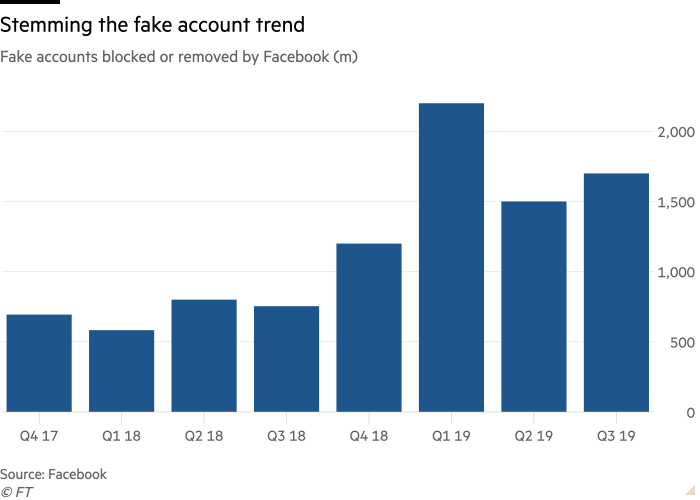
The more people a platform has the more value it offers to both users and investors. While one fund manager says rising fake users will not hurt Facebook so long as advertisers believe they are getting a good return, others are more circumspect.
Rupert Krefting, head of corporate finance and stewardship at M&G Investments, believes the issue of transparency is one of many that investors have not addressed satisfactorily. “Is any investor big enough to take on Facebook?” he asks. “I don’t think so.”
Fidelity fund manager Amit Lodha stopped investing in the company in 2017 after watching its reaction to privacy scandals. “I think it is important to look outside the spreadsheets and see this from a governance perspective,” he says. “Advertisers will pay for attention. An engagement number would be much more interesting than user growth but Facebook will not provide it,” he adds.
In July 2018, Facebook had a taste of what might happen if user growth slowed. It declared that in the US and Canada no new users had been added in the previous quarter, while in Europe the number had fallen by 1m. Revenue was still growing but at a slower rate. Facebook’s share price fell 19 per cent, reducing the market value by $120bn — the worst single day loss in market value by any listed US company in history.
The company’s solution to the uncertainty around the numbers is to offer a “family” user account number that bundles Facebook, Instagram and WhatsApp users together. However, this is likely to further reduce transparency.
Facebook is under wholesale attack by account fakers. Without detailed external, independent and real-time auditing, it is impossible for investors and advertisers to know how many users the social network really has. Facebook needs to open its user numbers to outside scrutiny. Until then, suspicions will deepen that the company’s share price and advertising rate card depend, in part, on bad data.
Comments